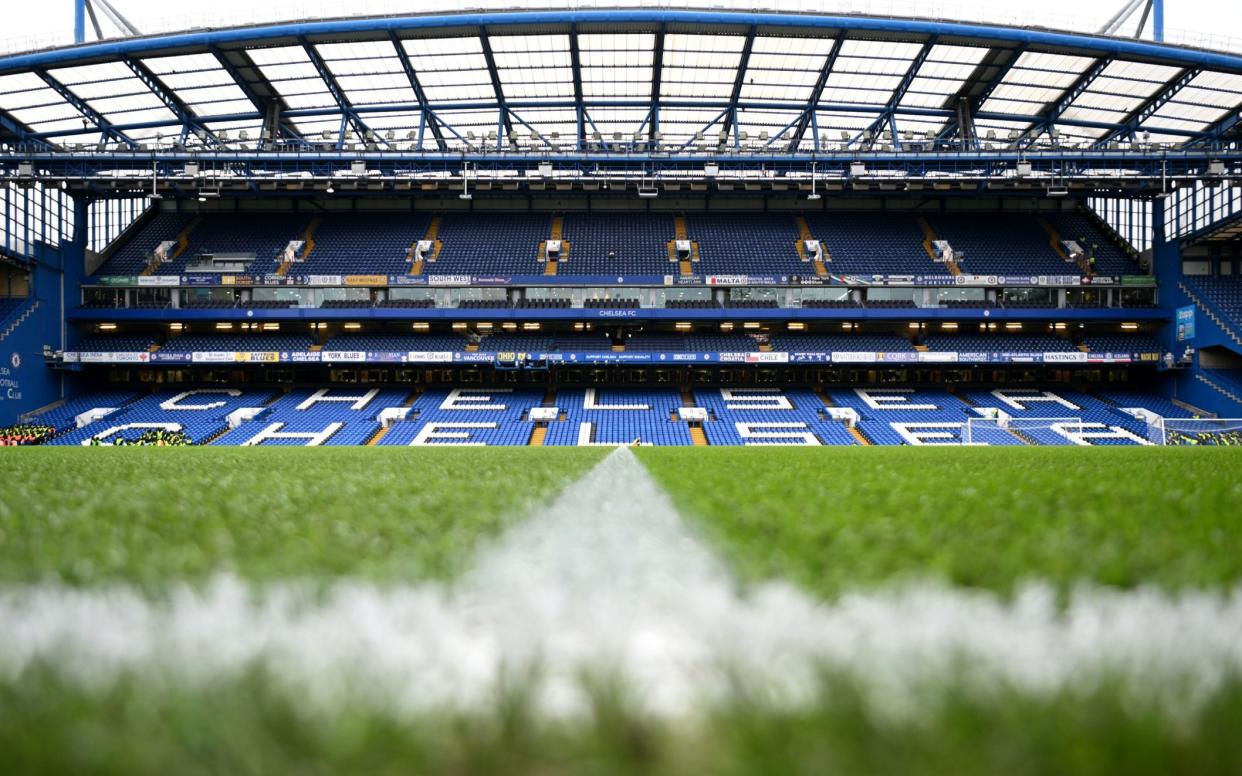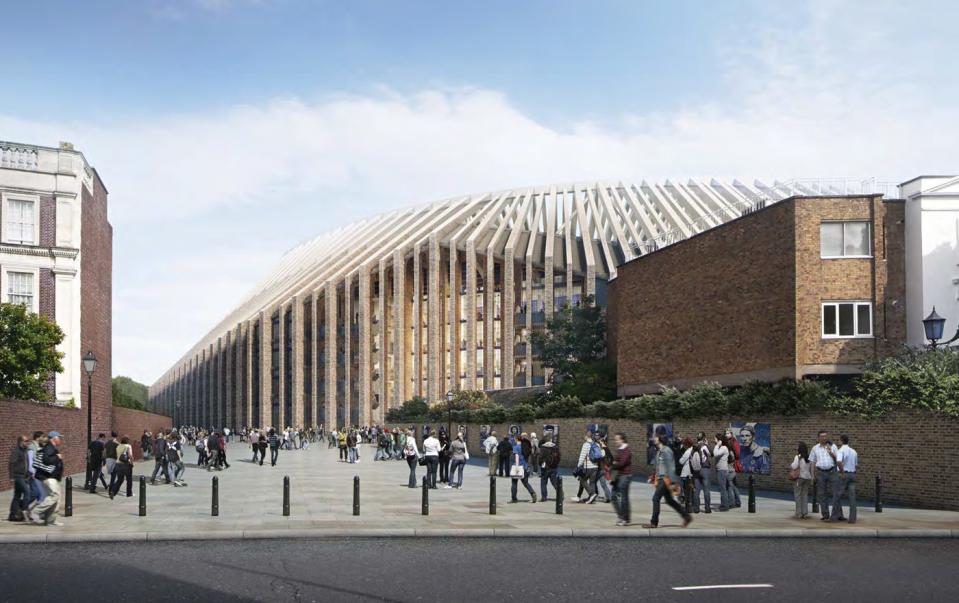Stamford Bridge is stuck in the past but Chelsea need billions to move on

The seven hired actors in green velvet jackets, who made such a spectacle of themselves in the seats behind the home bench in Stamford Bridge’s east stand last Saturday, were a small reminder of the huge problem that sits at the heart of Chelsea.
They were part of a paid promotion for a new movie over the course of that match day, one more commercial deal the club decided was too good to turn down. The seats they occupied are part of The Dugout Club, which the new consortium ownership of Chelsea has been selling for as much as £3,000 each for a game on the basis that you might find yourself in the same television shot as Mauricio Pochettino.

Across the pitch in the West Stand upper tier, the club have launched Westview; a revamped hospitality offering where the most expensive season tickets for all league and domestic cup home games are £3,685. If it all sounds a bit grasping then perhaps that is because the scope for change is so limited. When faced with the immense problem of Stamford Bridge’s suitability for the modern era, trying to do something – anything – to raise match-day income will always feel less than adequate.
The Behdad Eghbali-Todd Boehly consortium faces problems aplenty on the pitch and three forthcoming games of huge significance. Middlesbrough in the Carabao Cup semi-final, second leg on Tuesday, Aston Villa in the FA Cup and then Liverpool at Anfield in the Premier League on the last day of the month. Nothing will feel stable until Pochettino’s team looks consistently competitive. But not even a winning team can escape the shadow of a stadium the club grew out of years ago.
The building of a new stadium on the same Stamford Bridge site – or a new one elsewhere – was the challenge not even Roman Abramovich’s oligarch fortune could solve. More than 20 years since his acquisition of the club, the stadium conundrum has become ever more defining and ever more complex. Bedevilled by everything from local council planning, the dark heart of Londongrad, Vladimir Putin’s war in Ukraine and the state of the Victorian catacombs in a neighbouring West Brompton cemetery.
In the tradition of private equity bros who like to believe the world is theirs to conquer, the owners of Chelsea will doubtless believe they are the men to complete the quest. Yet at Friday’s annual meeting of Chelsea Pitch Owners, the plc run by fans which has owned the freehold to the pitch since 1993 – and a key stakeholder in any rebuild – it was clear that the club are back to the very start again.
By far the most experienced British property expert at the club is the director Jonathan Goldstein, who was an original part of Boehly’s consortium. The latest man to take on the ultimate West London basement excavation tension – which is one way of describing Abramovich’s mega-project for a new stadium, abandoned in 2018 – is Jason Gannon, the new chief operating officer. He was the managing director of the SoFi Stadium, built by the Kroenke family for NFL franchise Los Angeles Rams and opened in 2020.
Casper Stylsvig, Chelsea’s chief revenue officer, brought in from AC Milan, will also have a part to play but whether these two bright-eyed exec hires are still there on that putative day at some point in the future when a new stadium is opened, is very much up for debate.

The estimated cost of a new stadium is extraordinary. The timescale, remarkable. Upwards of £2 billion, and perhaps as long as six years from the start of the planning process to anything close to completion, with the team obliged to play elsewhere for as many as three seasons, perhaps more. Some fans would prefer Craven Cottage as a temporary groundshare for proximity. The club would look at Wembley for size and hospitality offering.
In the meantime, what happens to the Chelsea fanbase? CPO surveys have discovered Chelsea have the Premier League’s oldest season-ticket holder demographic – an average age of 58. By the time the club have a 60,000-capacity stadium it would also be seeking to attract a new generation of match-going fans, after years away from home.
The 40,341-capacity Stamford Bridge shrinks in size with growing match-day broadcaster demands. The most recent Deloitte audit of clubs’ finances had Chelsea’s annual match-day income at £82 million. Tottenham Hotspur’s was £125 million. Liverpool’s was £112 million. The ever more outdated Old Trafford earned Manchester United £126 million. To close the gap, Chelsea will have to build the most expensive stadium Europe has seen.
The club have bought most of the Oswald Stoll veterans housing site abutting the stadium for £80 million. The options to move elsewhere are now vanishingly small, although not impossible. The Earls Court development north of Stamford Bridge has a well-advanced masterplan with no provision for a stadium. Changing that course and the minds of the two applicable London borough councils would require a huge amount of money and political will.
Not rebuilding Stamford Bridge is not an option either, as Abramovich knew. The plan he commissioned was famously to dig downwards to accommodate a stadium bowl big enough and build across the two railway lines to the north and east. The vision was undoubtedly magnificent but, given what has happened since, one looks at those old projections for the future as one might a 1950s science fiction epic.

The club at least knows that it obtained planning once with Hammersmith and Fulham council and can do so again. Objections from local residents to living next to such a vast building site are likely to be even more vehement a second time. The potential damage to the catacombs from building-activity reverberations was named in planning last time.
Stadiums, however impressive, are not trophies – they are a means to winning trophies and all the other parts that come with being a successful club. Yet if Chelsea’s new ownership do build a new Bridge in the next two decades, they may well feel like they deserve a shiny cup of some sort. It is the one challenge, amid all the success, modern Chelsea have never really come close to solving.

